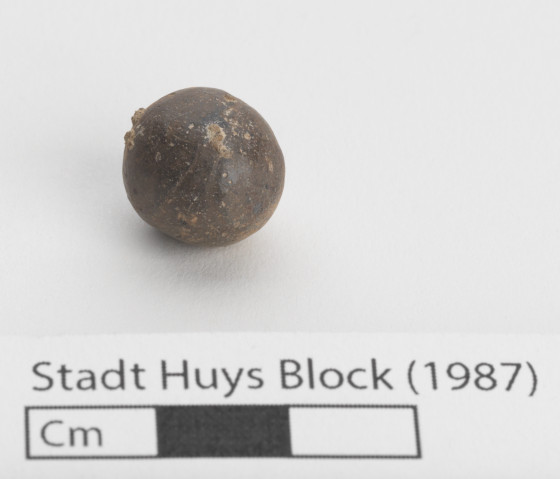Introduction: Lots 8, 9, and 15 are modern designations for adjacent parcels of land that were owned together and used as a single property until the early 1830's. Excavations produced important discoveries like that of the Colonial-era Lovelace Tavern, proving that significant archaeological resources could still exist in urban spaces. Project archaeologists were able to lobby for increased time and funds to continue their work on the strength of these finds, leading to additional discoveries. In all, the project provided considerable information about the history of New York City and its inhabitants from the 17th to the 20th centuries.
The tavern was constructed by the second English Governor of New York, Francis Lovelace, around 1670. Taverns were important spaces for colonial communities, serving as centralized meeting places that fulfilled important social, recreational, political, and economic functions. Lovelace Tavern became New York's temporary City Hall starting in the late-17th century after the Stadt Huys fell into disrepair and was demolished in 1706.
Rationale: Remains of the Lovelace Tavern were first encountered during the excavation of Test Cut AQ. Overall, archaeologists excavated 27 test cuts inside, adjacent to, or within the walls of the tavern, representing around fifty-percent of the total area. Together, Test Cuts BK and BQ formed a 17.5-foot long trench in the southwestern Lovelace area. Both BK and BQ contained significant Lovelace Tavern materials and layers, including the burned remains of the original wooden floor. Abundant diagnostic artifacts and intact tavern layers made both test cuts integral to the archaeological project.
Results: Subsoil. Though subsoil is by definition culturally sterile, some historic artifacts were found in this layer. Possible explanations for the presence of artifacts include transition and intrusion. Transition, meaning that there was fair amount of mixture between the cultural layers and the subsoil as the stratigraphy gradually transitioned. Intrusion, meaning that the artifacts came from elsewhere in the test cut. At any rate, this layer was identified as subsoil due to its similarity to other such layers in the project area and the marked drop-off of artifacts with depth.
Lot 8, Test Cut BK, Strata XIV, Level A
-
Collection method
Trowel, Screen (1/2-inch mesh). Natural Level.
-
Soil description
Red Sand with Brown and Green Lenses
-
Munsell
5YR 5/4



